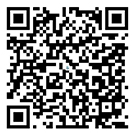In an era where wellness is no longer a luxury but a lifestyle, the resurgence of traditional healing systems like Ayurveda and Unani has captured global attention. With centuries of empirical wisdom, holistic healing principles, and deep-rooted herbal knowledge, these systems are witnessing a renaissance driven by rising consumer demand, government support, and growing international acceptance of natural medicine. The global herbal medicine market is projected to cross USD 430 billion, and India, with its rich heritage in Ayurvedic and Unani medicine, stands at the forefront of this growth.
Ayurvedic and Unani medicine has witnessed remarkable growth in recent years, both in India and globally, driven by increasing consumer preference for natural and holistic healthcare solutions. With rising awareness of the side effects of synthetic drugs and a growing inclination toward preventive and personalized medicine, traditional systems like Ayurveda and Unani are gaining strong traction. The global wellness movement, along with government initiatives such as the Ministry of AYUSH in India, has significantly boosted credibility, research, and market outreach for these ancient practices. Moreover, the post-COVID era has intensified the demand for immunity-boosting and stress-relief formulations, further accelerating the consumption of herbal remedies, tonics, and dietary supplements rooted in these systems.
The book begins by addressing the foundational aspects of starting an Ayurvedic or Unani medicine manufacturing business. It guides readers through regulatory procedures, plant layouts, machinery requirements, and packaging processes offering real-world support for transforming ideas into successful businesses. This handbook apart is its remarkable depth in covering actual medicinal preparations. With dedicated chapters on classical Ayurvedic formats like Taila (medicated oils), Lepa (pastes), Kwatha (decoctions), Arka (distillates), Asava & Arishta (fermented medicines), Pishti, Rasa Yoga, and Kupipaqva Rasayan, the book showcases a wide spectrum of ancient healing techniques. Furthermore, readers will discover how Ayurvedic tablets are manufactured with detailed formulation methods that are commercially viable and scientifically grounded.
On the Unani side, the book delves into the formulations and therapeutic practices such as Khamiray, Halway, Sirkay (vinegars), Arqiyat (aquas), Qaturat (eye drops), Kuhl (collyriums), Muffarehat (exhilarants), and Marhamain (ointments).
This book is an essential guide for entrepreneurs, manufacturers, herbalists, research scholars, and students who aspire to understand and participate in this thriving industry. Whether you're planning to launch a start-up, upgrade an existing manufacturing unit, or simply explore the therapeutic science behind ancient formulations, this book offers a one-stop resource packed with practical insights and technical depth.









